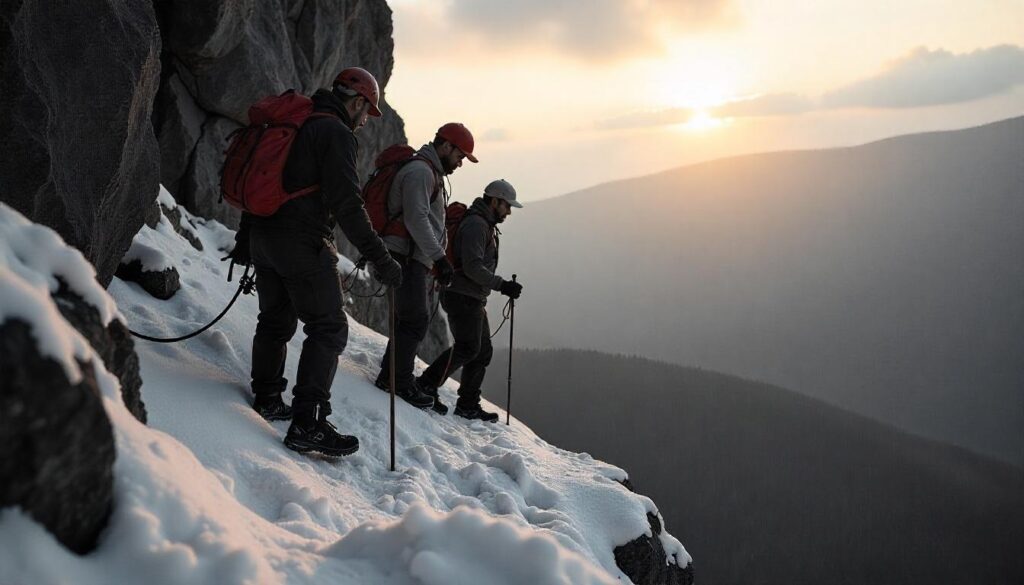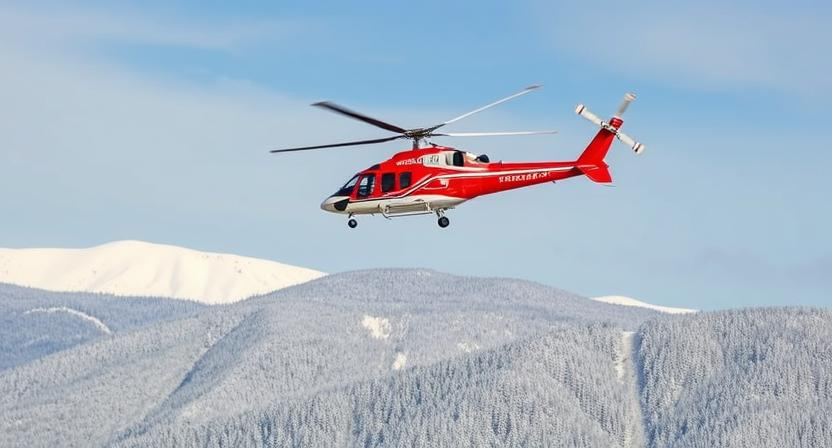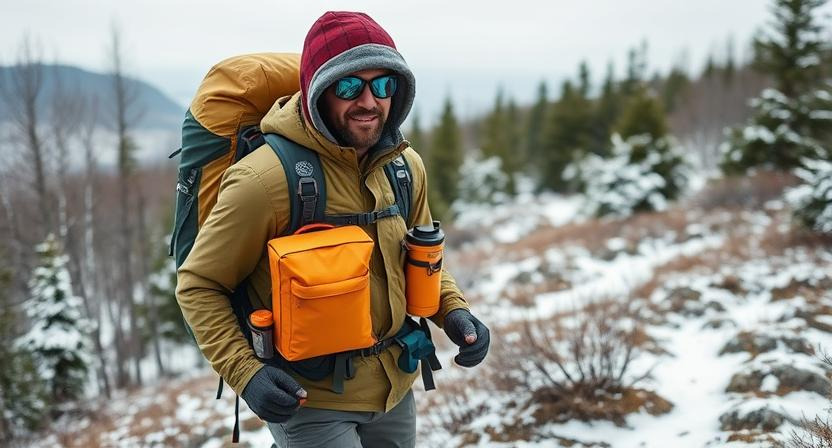
Introduction
Imagine heading out on a challenging hike, only to get caught in extreme weather or lose your way. You call for help, a search and rescue (SAR) team arrives, and you’re saved. But then, instead of just relief, you receive a bill for thousands of dollars.
That’s exactly what’s happening in New Hampshire, one of the few states where hikers deemed negligent can be charged for their rescues. This policy has sparked debates about responsibility, preparedness, and fairness, leaving outdoor enthusiasts divided.
In recent years, multiple hikers have faced steep rescue bills, with the most recent incidents on Franconia Ridge and Mount Washington drawing national attention. While some believe these fees hold hikers accountable, others argue that SAR should always be free to avoid discouraging people from calling for help.
In this article, we’ll discuss about Hiker Rescue Bill New Hampshire break down New Hampshire’s controversial hiker rescue policy, look at recent incidents, and compare how other states handle similar situations.
Recent Rescue Incidents in New Hampshire
Hikers Rescued on Franconia Ridge
One of the latest cases sparking debate occurred on January 18, 2025, when two hikers—Bart Zienkiewicz (34) and Louis Scotti (33) from Connecticut—set out on an ambitious winter hike along Franconia Ridge.
They had planned their route carefully, or so they thought. But when they reached Greenleaf Hut, they mistakenly took the Greenleaf Trail (north) instead of the Old Bridle Path (south). The mistake became serious when they found themselves off-trail in extreme weather conditions, including rain, sleet, and snow.
How the Rescue Happened
Struggling to navigate through worsening conditions, the pair reached Eagle Pass before realizing they were in danger. Feeling the early signs of hypothermia, they made the call for rescue.
Two officers from New Hampshire Fish and Game’s Conservation Division responded, locating them and escorting them back safely. The hikers declined medical treatment, but the incident raised a critical question: Should they pay for their rescue?
Since New Hampshire law allows officials to charge hikers deemed negligent, their case was sent to the Attorney General’s Office, where a final decision on billing them was pending.
Mount Washington Rescue Controversy
Another high-profile case involved a hiker who ignored weather warnings and forced his way into a park vehicle at the summit.
Who Was the Hiker?
On November 26, 2024, Tristan James Murrin (27) from Virginia Beach attempted to summit Mount Washington, despite being warned about dangerous conditions. He began his ascent via the Tuckerman Ravine Trail at 5 AM, accompanied by his large dog.
By the time he reached the summit at 11 AM, temperatures had plummeted, and he realized he was in trouble. Seeking shelter, he entered a State Park Sno-Cat vehicle—and refused to leave.
Why Was He Considered Negligent?
- Ignored weather warnings – Forecasts predicted subzero temperatures and extreme winds.
- Lacked proper gear – Officials reported that he was woefully unprepared for the conditions.
- Rescue complications – His dog further complicated the situation.
Park officials eventually de-escalated the situation and drove Murrin and his dog down the mountain. When questioned by conservation officers, he refused to cooperate and walked back to his car.
Due to his actions, officials recommended that he be billed for the cost of the rescue, reinforcing New Hampshire’s strict stance on hiker responsibility.
Other Notable Rescue Cases in New Hampshire
New Hampshire has a long history of billing negligent hikers, with several cases standing out:
- 2023 – Two hikers on Mount Lafayette faced a $2,400 bill after underestimating winter conditions and requiring an overnight rescue.
- 2022 – A Massachusetts hiker was charged $5,000 after attempting a winter hike without proper gear and needing a helicopter extraction.
- 2019 – Two hikers pled guilty to reckless conduct after getting lost on Franconia Ridge and agreed to pay fines.
How Common Are These Cases?
While most rescues in the U.S. are free, New Hampshire stands out for actively enforcing fines in cases of reckless behavior. However, only a small percentage of rescues—less than 10%—actually result in billing.
Why New Hampshire Charges Hikers for Rescues

The Law Behind Rescue Fees
New Hampshire’s hiker billing policy is based on a state law that allows Fish and Game officials to charge hikers deemed negligent for their rescues.
Here’s how it works:
- Negligence is determined if hikers ignore warnings, fail to prepare, or engage in reckless behavior.
- The Attorney General’s Office reviews each case before deciding on billing.
- If found negligent, hikers must pay for some or all of the rescue costs.
This law has been in effect since 2008 and is meant to discourage reckless hiking while helping cover the state’s $309,000 annual rescue costs.
How Much Does a Search and Rescue Cost?

The average cost of a rescue in New Hampshire varies, but here’s a general breakdown:
| Rescue Type | Estimated Cost |
| Basic ground rescue | $5,000 – $7,500 |
| Complex rescue (multiple officers) | $8,000 – $12,000 |
| Helicopter rescue | $15,000 – $25,000 |
New Hampshire’s budget for search and rescue operations is around $150,000 per year, but actual costs often exceed this amount.
This is why the state introduced the $25 Hike Safe Card, which covers rescue costs for hikers who purchase it annually.
Comparison With Other States
New Hampshire is one of the few states that actively enforces billing for rescues. However, some other states have similar laws:
- Utah – Reserves the right to bill hikers but rarely enforces it.
- Oregon – Allows counties to charge for SAR but seldom does.
- Colorado & California – Generally do not charge for rescues, considering them a public service.
Most states prioritize free rescues to ensure that hikers call for help when needed rather than risk serious injury or death.
The Risks of Hiking in New Hampshire

Hiking in New Hampshire offers breathtaking landscapes, but it also comes with serious risks. The state’s rugged terrain and unpredictable weather make it one of the most dangerous hiking locations in the U.S. Every year, hikers get lost, suffer injuries, or require emergency rescues, with some even facing steep rescue bills under the state’s controversial policy.
In this section, we’ll explore why New Hampshire is particularly hazardous, common mistakes hikers make, and how to stay safe while avoiding costly rescue fees.
Why New Hampshire is One of the Most Dangerous Hiking Locations
New Hampshire may not have the highest mountains, but its trails are among the most treacherous in the country. Even experienced hikers can find themselves in life-threatening situations due to:
Unpredictable Weather Patterns and Extreme Cold
New Hampshire’s mountains, particularly in the White Mountain National Forest, are notorious for rapid weather changes. One moment, hikers are enjoying clear skies; the next, they are battling freezing winds, sudden storms, and near-zero visibility.
- Mount Washington, the highest peak in the Northeast, holds the record for some of the strongest winds on Earth, with gusts reaching over 200 mph.
- Winter conditions can last from October through May, with temperatures dropping as low as -50°F with wind chills.
- Sudden storms can roll in without warning, leaving hikers stranded in dangerous conditions.
Many hikers underestimate these risks, leading to life-threatening situations requiring emergency rescues.
Difficult Terrain and How Hikers Get Lost
New Hampshire’s hiking trails are steep, rocky, and often unmarked, making navigation difficult, especially for inexperienced hikers.
- Trails like Franconia Ridge and Mount Washington have long, exposed sections where hikers can easily lose their way in fog, snow, or high winds.
- Many hikers get lost due to poor trail markings, incorrect turns, or underestimating the distance and difficulty of the hike.
- Cell service is unreliable in most mountainous areas, making it nearly impossible to call for help if lost.
Cases of Hypothermia and Frostbite Among Hikers
The combination of freezing temperatures, strong winds, and wet conditions makes hypothermia a leading cause of rescues in New Hampshire.
- Hypothermia occurs when body temperature drops dangerously low, leading to confusion, shivering, and eventually unconsciousness.
- Frostbite can set in within minutes when exposed skin freezes, causing permanent tissue damage.
- Many hikers facing hypothermia or frostbite are unable to move and must be rescued before they succumb to the cold.
Even hikers who start off properly dressed and prepared can run into trouble if the hike takes longer than expected or if the weather worsens unexpectedly.
Common Mistakes That Lead to Rescue Situations
Every year, search and rescue teams respond to hikers who made preventable mistakes. Some of the most common reasons hikers end up in trouble include:
Lack of Proper Gear and Clothing
Many hikers fail to bring the right gear, thinking a short hike doesn’t require much preparation. However, New Hampshire’s rugged trails and unpredictable weather demand proper equipment.
- Hikers often wear cotton clothing, which absorbs moisture and accelerates heat loss in cold conditions.
- Many don’t bring extra layers, waterproof jackets, or insulated gloves, leaving them vulnerable to the cold.
- Without headlamps, extra food, and emergency blankets, an unexpected delay can turn a simple hike into a dangerous survival situation.
Underestimating Winter Conditions
Even experienced hikers have underestimated New Hampshire’s extreme winter conditions, leading to serious accidents and costly rescues.
- Snow and ice make trails slippery and hard to navigate, increasing the risk of falls and injuries.
- Many hikers assume summer trails are accessible year-round, only to find themselves trapped in deep snow or impassable terrain.
- A lack of winter hiking experience often leads hikers to overestimate their abilities and underestimate the dangers.
Navigational Errors and Poor Planning
Getting lost is one of the most common reasons hikers need rescue. Many rely solely on their phone’s GPS, which is a huge mistake in areas with no signal.
- Failing to carry a physical map and compass often leads to hikers getting lost.
- Not researching the trail length, elevation gain, and difficulty causes some to attempt hikes beyond their fitness level.
- Some hikers start too late in the day, running out of daylight and getting stranded in the dark.
These mistakes not only put hikers at risk but also increase the likelihood of needing an expensive rescue.
How Hikers Can Avoid Getting Billed for Rescues
If you’re planning a hike in New Hampshire, following safety guidelines can reduce the risk of getting lost, injured, or needing an emergency rescue.
Essential Safety Tips for Hiking in New Hampshire

Checking Weather Forecasts and Choosing the Right Season
Before heading out, always check the latest weather forecasts for the area you’re hiking in.
- Websites like the Mount Washington Observatory provide real-time weather updates.
- Avoid hiking during storms, high winds, or extreme cold warnings.
- If the forecast predicts rapid temperature drops or heavy snow, consider postponing your hike.
Packing Survival Gear and Emergency Equipment
Bringing the right gear can make the difference between a safe hike and a dangerous situation. Every hiker should carry:
- Extra layers and waterproof clothing
- A map, compass, and GPS device
- A headlamp with extra batteries
- High-calorie snacks and plenty of water
- A first aid kit and emergency shelter (such as a bivy sack)
Having these essentials could prevent a rescue situation or at least help you survive until help arrives.
Importance of Having Proper Navigation Tools
Always carry a detailed trail map and compass, even if you have a GPS device.
- Do not rely solely on your phone, as battery life drains quickly in cold conditions.
- Learn how to use a compass and map for navigation before your hike.
- Mark key landmarks to avoid getting lost.
Understanding the Hike Safe Card

One way to avoid being billed for a rescue is by purchasing the Hike Safe Card.
What is the Hike Safe Card and How it Works?
The Hike Safe Card is a permit issued by the New Hampshire Fish and Game Department that covers the cost of search and rescue operations if needed.
- Even if you need a rescue, you won’t be charged if you have this card.
- The card does not excuse reckless behavior, but it provides financial protection for responsible hikers.
How Much it Costs and What it Covers
The Hike Safe Card is relatively affordable:
- $25 per year for an individual
- $35 per year for a family
It covers all search and rescue costs unless the hiker is found to be grossly negligent.
Why Every Hiker in New Hampshire Should Have it
With New Hampshire’s strict rescue billing policies, purchasing a Hike Safe Card is a smart decision. It provides:
- Peace of mind in case an emergency rescue is needed.
- Financial protection from surprise rescue bills.
- Support for local search and rescue teams who risk their lives to save stranded hikers.
When to Call for a Rescue vs. When to Self-Rescue
Knowing When it is Truly an Emergency
Call for help if:
- You’re injured and unable to walk.
- You’re completely lost with no way to find the trail.
- You’re experiencing severe hypothermia or frostbite.
Self-Rescue Techniques for Minor Incidents
If possible, stay calm and try to find a safe way back.
- Use a whistle or flashlight to signal for help.
- Seek shelter and stay warm if waiting for rescue.
- Follow a river or trail downhill, as it often leads to safety.
Conclusion
New Hampshire’s policy of billing hikers for rescues is a topic that sparks debate. On one side, it ensures that rescue services remain funded and discourages reckless hiking. On the other, it raises concerns that some hikers might hesitate to call for help in emergencies to avoid hefty bills.
However, one fact remains clear—New Hampshire’s rugged terrain and unpredictable weather make hiking a serious challenge. Proper preparation is essential to avoid dangerous situations.
To stay safe and avoid unexpected costs:
- Always check weather forecasts before heading out.
- Carry the right gear and navigation tools.
- Know your limits and avoid risky trails in bad conditions.
- Consider getting a Hike Safe Card for financial protection.
By following these precautions, hikers can enjoy New Hampshire’s beautiful landscapes responsibly and safely—without worrying about a costly rescue.
If you want to explore the best hikes in New Hampshire then here is your way to it.
FAQs
How much does a rescue cost in New Hampshire?
The cost of a search and rescue (SAR) operation in New Hampshire varies, but it typically ranges from $5,000 to $10,000, especially if airlifting is involved. The New Hampshire Fish and Game Department spends approximately $309,000 annually on rescues.
Do lost hikers have to pay for rescue?
Not always. Hikers are only billed if they are deemed negligent or reckless in their actions. If a hiker is well-prepared and an accident happens beyond their control, they usually won’t be charged. However, if they ignore weather warnings, lack proper gear, or take unnecessary risks, they could receive a bill.
What does the NH Hike Safe Card cover?
The Hike Safe Card is a $25 annual pass that protects hikers from being personally billed for rescues. It covers search and rescue costs unless the hiker is found guilty of reckless conduct. It does not replace emergency medical insurance or cover hospital expenses.
Who pays for a mountain rescue?
In most states, rescue services are funded by the government and donations, meaning hikers don’t have to pay. However, New Hampshire (along with Utah and Oregon) charges negligent hikers to offset costs. Rescue operations are primarily funded by hunting and fishing licenses, donations, and Hike Safe Card sales.
Ethan Marlowe is an experienced hiker and outdoor gear specialist based in Colorado. With over 7 years of hands-on experience trekking through the Rockies, Pacific Northwest, and East Coast trails, he delivers practical advice, expert gear reviews, and survival insights. His goal is to help hikers of all levels make smarter decisions on and off the trail.


